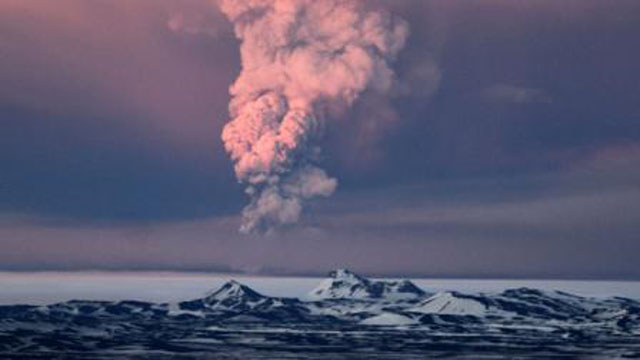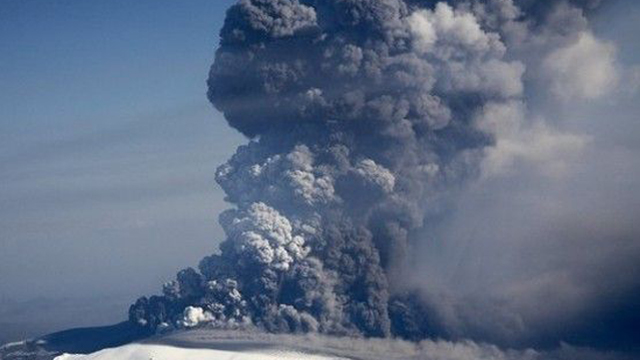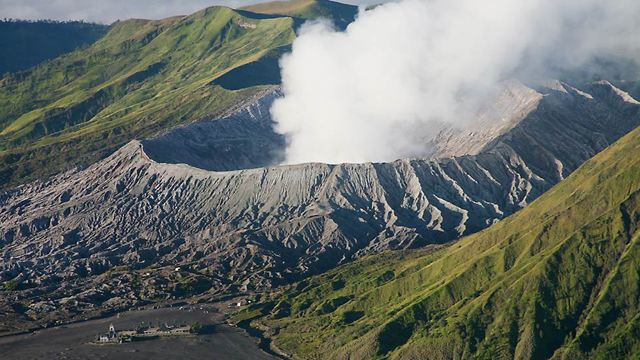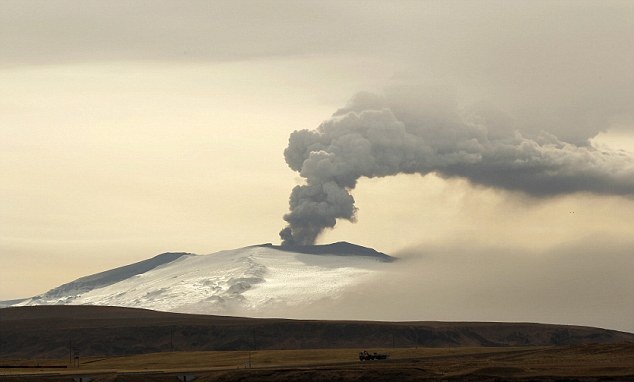Eyjafjallajökull chugs along as Europe begins to recover

nThe ash-and-steam plume from Eyjafjallajökull on April 19, 2010.
nn
Eyjafjallajökull in Iceland is slowly settling into a pattern of strombolian-to-surtseyan (depending on meltwater access to the crater) explosions that have been sending ash up to 2-5 km above the summit. We can see this new, more diffuse plume in the recent NASA EO image of the eruption taken April 19. There is still abundant ice to melt at the summit as there have been a number of floods overnight and this morning near the volcano, betraying the continuing production of meltwater by the eruption. The Icelandic Met office points out two important tidbits: (1) Eyjafjallajökull has become to deflate, which might mean less vigorous eruption for the time being and (2) there are no signs of any impending eruption at Katla. Volcanic tremors are also down at Eyjafjallajökull. If you want to see a day’s worth of volcanic activity at Eyjafjallajökull in, oh, less than a minute and a half, check out the timelapse video made by Eruptions reader Philipp from the Vodafon webcam on April 20th.
nn
As for flights in and out of Europe, many airports are back in operation, including London-Heathrow. There have been a few minor incidents with the ash, mostly to the north of the British Isles, but so far, no major problems. However, closures could return if the ash becomes a problem over the continent again. Of course, now that flights are back, we can begin to estimate the cost of the airspace closure, and the IATA puts it at ~$1.7 billion. You have to be a little amused by articles like this one in the Washington Post that declares that it is hard to predict volcanoes, but at least the BBC has a report on how relatively small the Eyjafjallajökull eruption is in the grand scheme of volcanism. And we can thank Iceland for one thing: difficult names.



